Rania Matar’s Captivating Photographs of Young Women Around the World Capture the Transitory Beauty of Adolescence
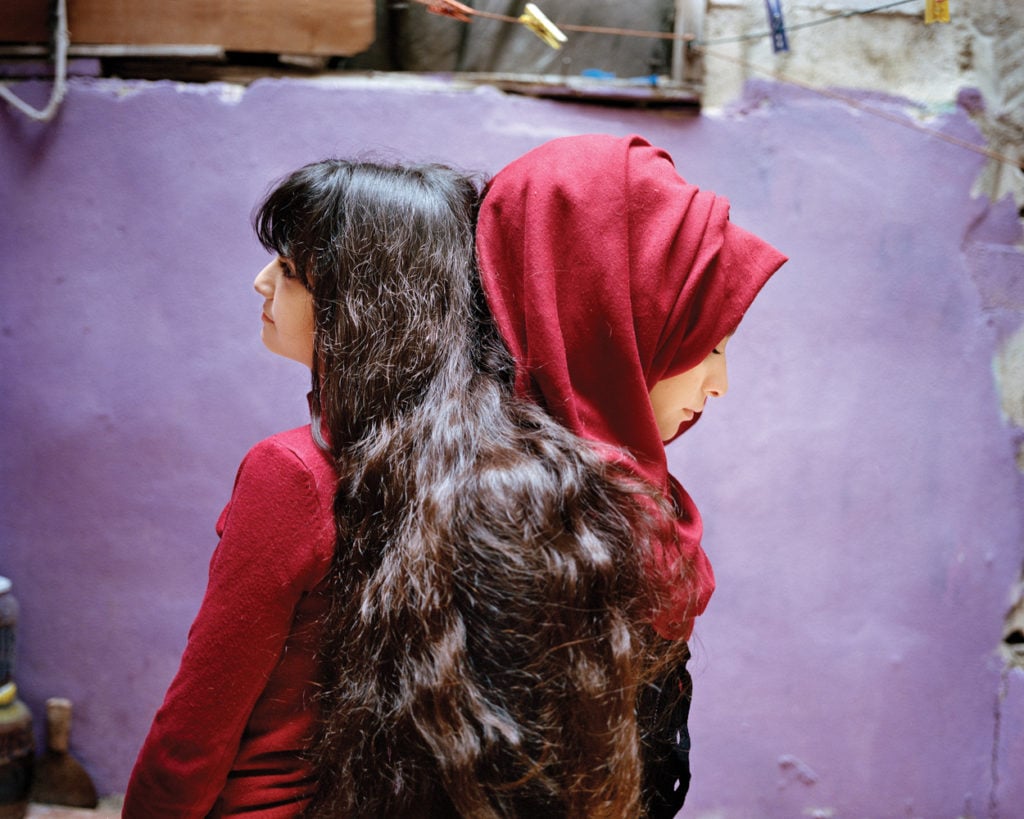

Katie White

A few years ago, photographer Rania Matar spending time in Ohio, in the dead of winter. The Lebanese-born artist had been awarded a residency at Kenyon College for the 2017–18 academic year. Born in Beirut to Palestinian parents, she’d moved to the US in 1984 and made her home in Massachusetts. But she’d never been to the Midwest before, never seen the landscape and the particularities of the winter there. She found herself inspired by this new landscape she was discovering—and the young women she saw moving through it.
Matar’s career had already been devoted to photographing young women, mainly her daughters, in the transition between girlhood and womanhood—and in Ohio, unsure of what form her work would take, she began a series of portraits of young women she’d recently met.
The series, which came to be known as “She,” continued after Matar left Ohio and traveled back to Lebanon, and throughout the US. Now, a selection of these portraits is being presented in an eponymous online exhibition at Richard Levy Gallery. Together, Matar’s images are a window into a precipitous moment in the lives of young women from around the world.
Recently, we spoke to Matar about the inspirations behind the series, the stories behind some of her favorite images, and where her work has been heading during quarantine.
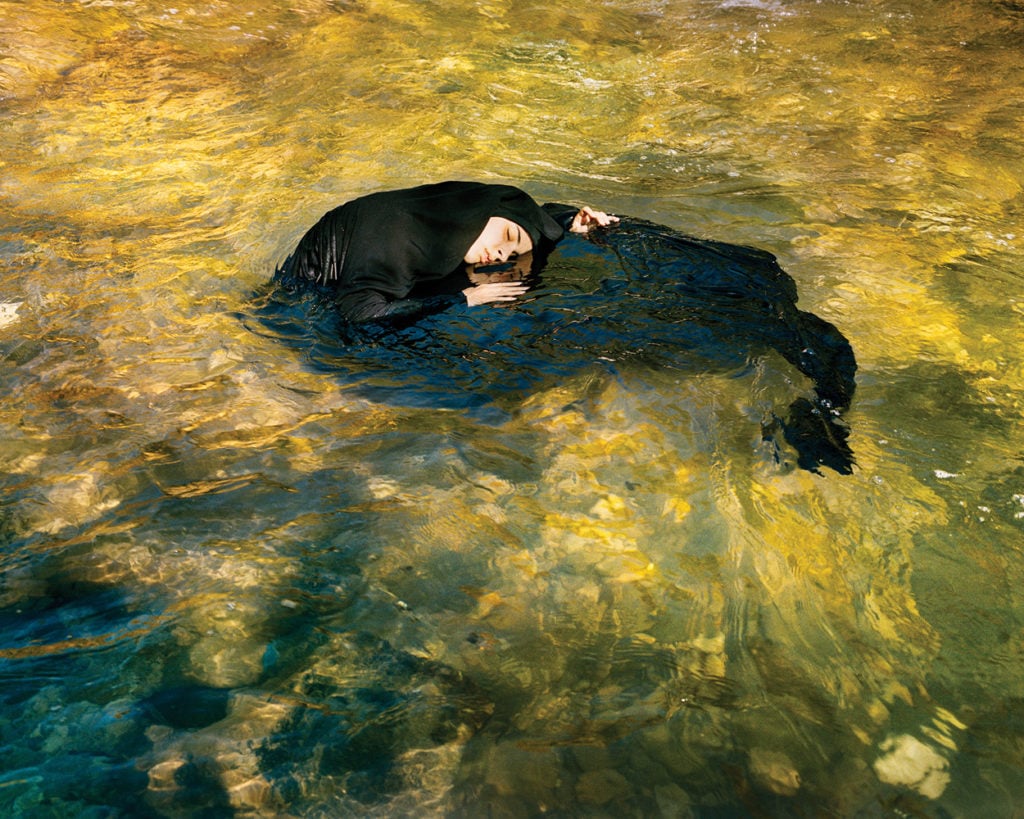
Rania Matar, Alae, Khiyam, Lebanon (2019). Courtesy of Richard Levy Gallery and the artist.
How did the “She” series come about?
Throughout my career, my work has been concerned with the passage from girlhood to womanhood, especially in American and Lebanese cultures. Even though these cultures might seem to have very little in common on the surface, there is a universality to growing up, even in different cultures, even in different parts of the world. When I started this particular series at Kenyon, I had finished a project called “Unspoken Conversations” about mothers and daughters, at a time when my older daughter was in college. That work was very autobiographical on some level and, when I arrived in Ohio, I was not sure what I was going to do.
On a personal level, I had started losing a lot of my hair at that time and nobody could figure out why. I have big curly hair and it is very much a part of my identity. It made me really think about our sense of physicality and texture as women. And in this new place, I found a love for the midwest’s river landscapes, the texture of that natural world. And so I started working intuitively and I realized I was still photographing girls the ages of my daughters who had left home, but instead of being at home, I captured these young women in the transitional environment of nature. After I left Ohio and returned to my home in Massachusetts, the work kept growing. I was awarded a Guggenheim fellowship that allowed me to continue the series back in Lebanon and in other places in the US as well.
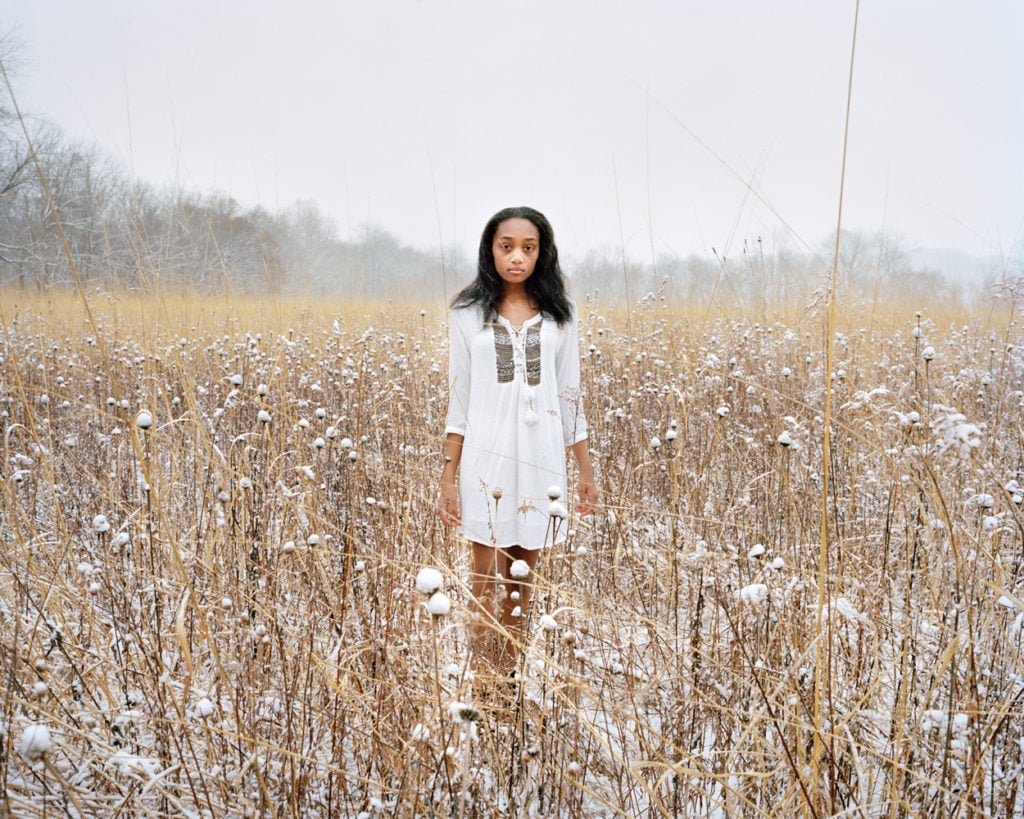
Rania Matar, Alasia, Gambier, Ohio (2018). Courtesy of Richard Levy Gallery and the artist.
You mentioned losing some of your hair—I noticed how arresting these young women’s hair is in many of the photographs. Or when the hair is covered by a headscarf, how tactile and richly colored the cloth looks.
It was not necessarily conscious but the experience [of hair loss] was haunting me and that came through in the art on some level. I was very interested in how we present ourselves and identity outwardly, through our hair, clothing, fabrics. My older daughter was in her early 20s when I started the series and I do think about how hard it is to be at that age bracket today with this kind of addiction to Instagram and social media. How much pressure there is to appear a certain way. So for me, it added the sense that I wanted to focus on these individual’s own textures and their own physicality and how they present themselves. But I wanted it to be about empowering them as well and have the process be collaborative.
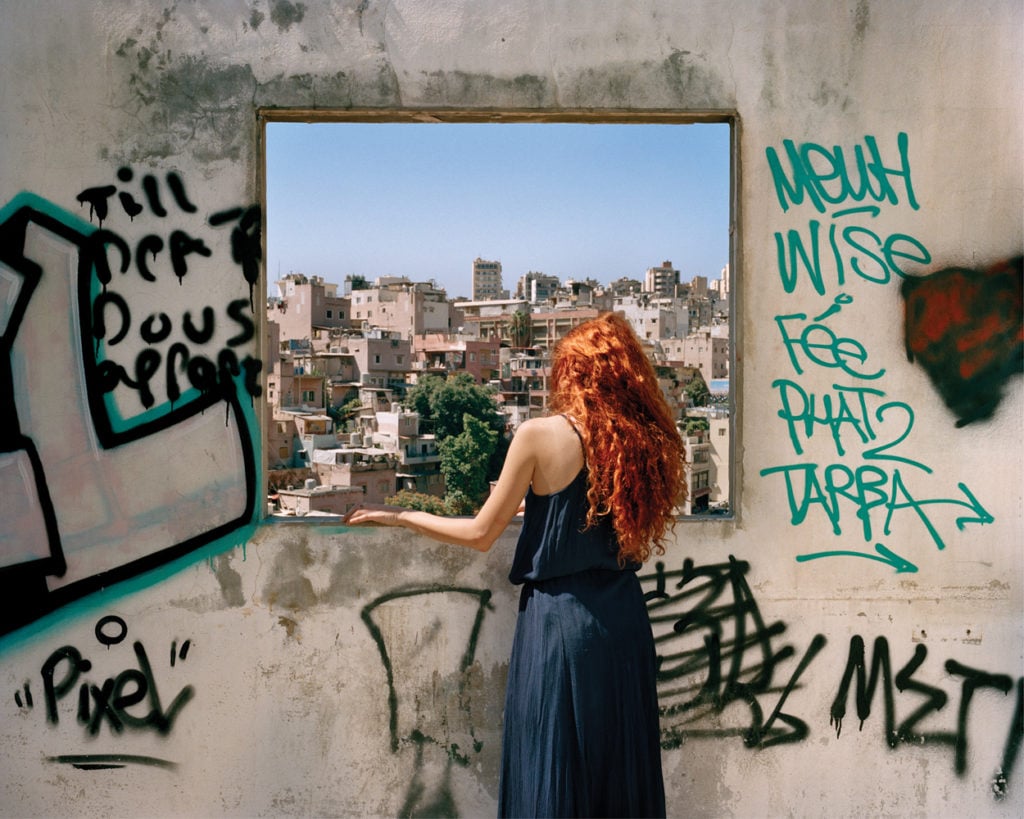
Rania Matar, Nour, Beirut, Lebanon (2018). Courtesy of Richard Levy Gallery and the artist.
And the spaces they’re in—did you have ideas in mind as to where you would take these images?
The photographs happened very organically, but I’m trained as an architect originally, and I think the textures of walls or space can be so important. I had never spent time in rural Ohio and I found myself in the middle of nowhere—in a nice way. It made me think about how you could reinvent yourself in this new space on some level.
Then, in Lebanon, I had done another project where I focused on Syrian refugees, children often standing in front of these graffiti-covered and textured walls. Sometimes you don’t notice things when you know the place very well, but when I started taking those photos I became aware of how much the walls were part of the texture of those kids’ cultural roots. So, I decided I wanted to include some sense of landscape and space in these images as well whether in Ohio, Beirut, or Miami.
I’ve spent many hours looking at Impressionist and pre-Raphaelite paintings—a lot of my work can look like painting in that sense—but I did not want the figures to be passively placed anywhere. In a great turn of events, the National Museum of Women in the Arts included three of my photographs in an exhibition called “Live Dangerously” and I loved that they saw the work in that way—as a kind of action. I wanted a sense of empowerment and collaboration.
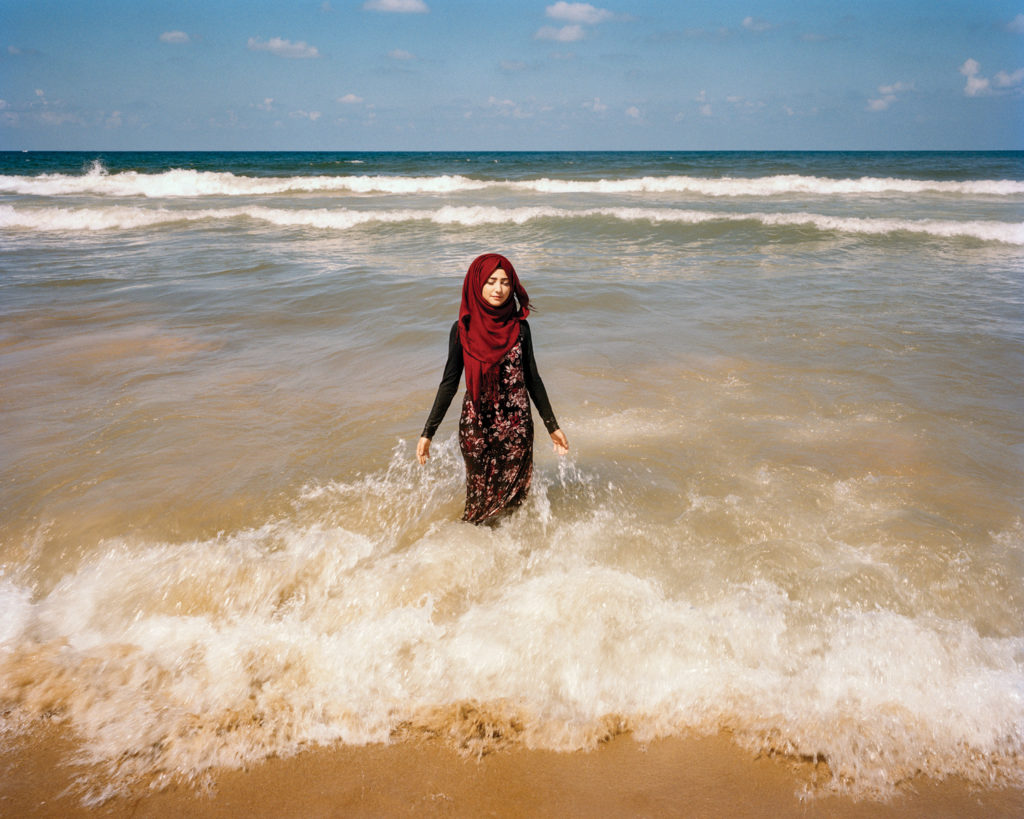
Rania Matar, Samira at the Beach (2019). Courtesy of Richard Levy Gallery and the artist.
How do you meet your models? You’ve photographed your own daughters, but how about the young women you don’t know?
I meet most of the women I photograph just out in normal life and I approach them without pressure, I explain that I’m a photographer and I’d like to take their picture and I give them my email. Most people, the vast majority, agree. Now, with quarantine, things are a bit different. Some people now approach me via Instagram. Other times I’ll photograph one person again and again. I started photographing a girl named Samira in a refugee camp when she was only four years old. I’ve kept photographing her into her adolescence—and for the first time recently she asked me to take her photograph outside of the camp and we went to the beach. That was an important moment for us. A series of my photographs just of Samira is part of a show called “Just Kids” at the Minneapolis Institute of Arts, which is of course closed to the public right now. But, with Samira, photography has always been the basis of our relationship—and I’d say it’s much easier to photograph someone you don’t know, rather than someone you do. There’s something beautiful about kind of just discovering each other and kind of letting the process grow.
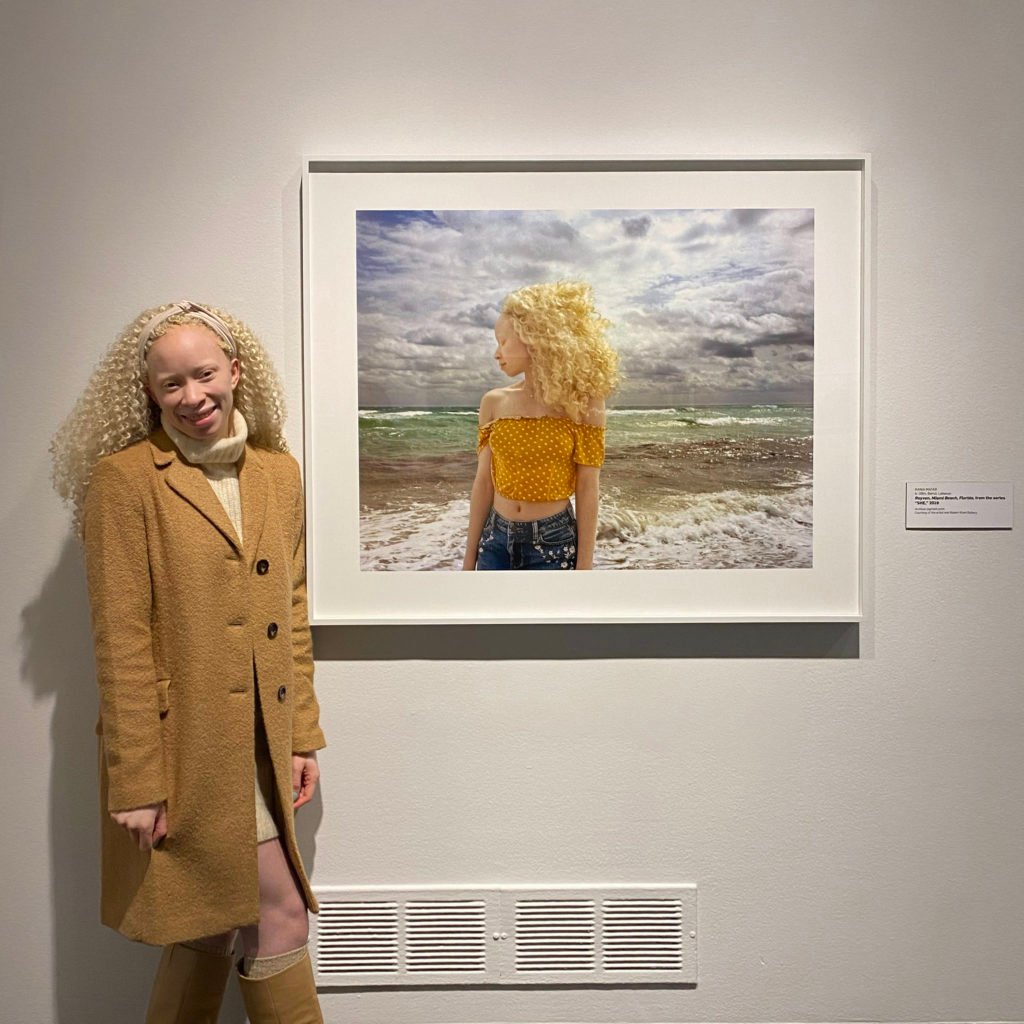
Rayven stands next to Matar’s portrait of her at the opening for “Live Dangerously” at the National Museum of Women in the Arts.
Richard Levy Gallery just published an accompanying online catalogue to the exhibition, which details a lot of the stories of how and where the photographs were taken, and stories about each model. Are there any particular stories from the series that are special to you?
Yes, Rayven, whose image appears in the show. I met her in Miami. I was waiting in line at a restaurant with my daughter and I saw this yellow hair, this blonde hair, that captivated me. She turned and looked at me and I said I’d love to photograph you. She kind of said okay, but then I explained I was leaving that same afternoon to go back to Boston. She was in Miami visiting from Wichita, Kansas, and luckily had nothing to do for the afternoon so we went to the beach. It was in the middle of the day, which is usually the worst lighting, but it was cloudy, so the image turned out just unbelievably. Her photograph was included in the show at the National Museum of Women in the Arts and they wound up acquiring that photograph. Rayven came up for the show and she was so excited to see her picture. She kept thanking me for including her and for seeing her beauty, thinking that one day her great-grandchildren could still see her image in a museum. It was extremely touching.

Rania Matar, Susan, Salem, Massachusetts (2020). Courtesy of the artist.
Has quarantine taken your work in a new direction?
I’ve spent a lot of time editing and working toward my next book. I had all the work spread out on my floor in my studio and I started realizing I often also have a few photographs that were not a part of that series and something else. One of the images had a window, with a strong sense of inside and outside. Then I was looking at my neighbor across our shared yard, and again I saw another window. So I’ve been photographing people through their windows and, and, in a way, I see so much of the “She” series appearing in these images as well. Instead of someone looking out, in these images the outside world is literally reflected on the person inside. Now, people are reaching out to me to have their photos taken and this has become another step of collaboration for me—it becomes a very intimate form of connection.
“She” is on view online at Richard Levy Gallery through July 1, 2020.
